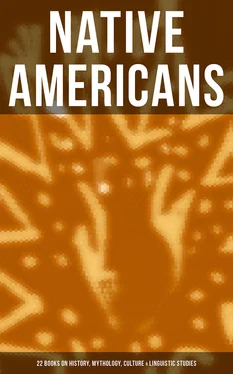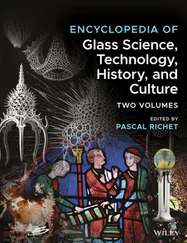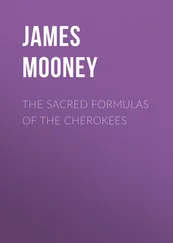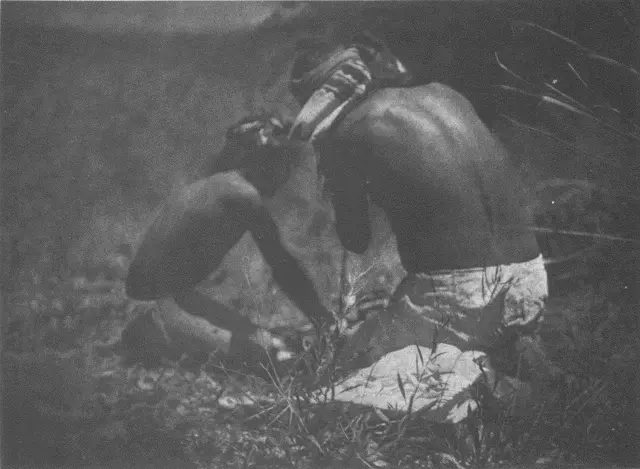
The Fire Drill - Apache
In treating the various tribes it has been deemed advisable that a geographic rather than an ethnologic grouping be presented, but without losing sight of tribal relationships, however remote the cognate tribes may be one from another. To simplify the study and to afford ready reference to the salient points respecting the several tribes, a summary of the information pertaining to each is given in the appendices.
In the spelling of the native terms throughout the text, as well as in the brief vocabularies appended to each volume, the simplest form possible, consistent with approximate accuracy, has been adopted. No attempt has been made to differentiate sounds so much alike that the average student fails to discern the distinction, for the words, where recorded, are designed for the general reader rather than the philologist, and it has been the endeavor to encourage their pronunciation rather than to make them repellent by inverted and other arbitrary characters.
I take this opportunity to express my deep appreciation to those who have so generously lent encouragement during these years of my labor, from the humblest dwellers in frontier cabins to the captains of industry in our great commercial centres, and from the representatives of the most modest institutions of learning to those whose fame is worldwide. Without this encouragement the work could not have been accomplished. When the last opportunity for study of the living tribes shall have passed with the Indians themselves, and the day cannot be far off, my generous friends may then feel that they have aided in a work the results of which, let it be hoped, will grow more valuable as time goes on.
EDWARD S. CURTIS.
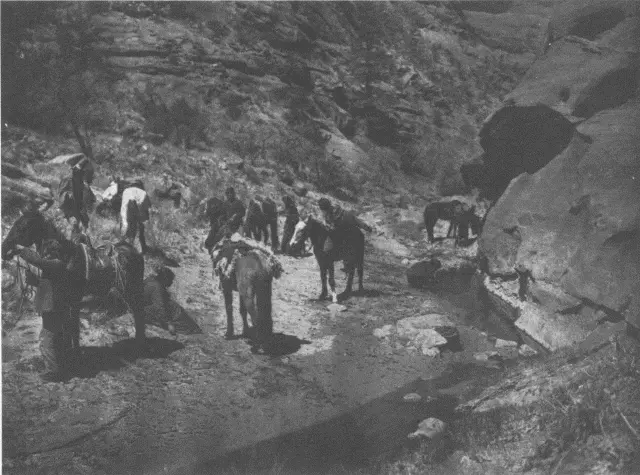
A Noonday Halt - Navaho
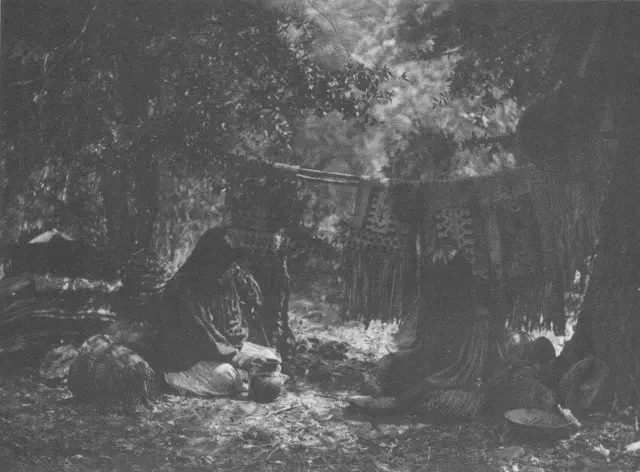
Apache Camp
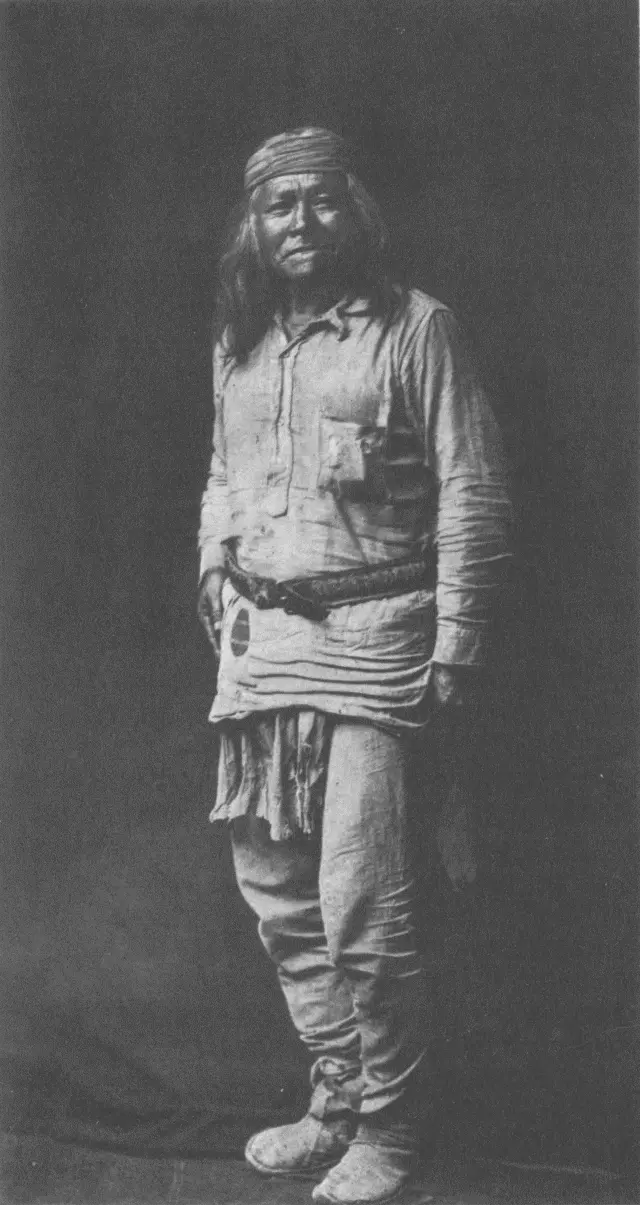
Typical Apache
Table of Contents
Table of Contents
The Indian and his history present innumerable problems to the student. Facts seemingly contradict facts, well-founded theories contradict other theories as well founded. Linguistically the Apache belong to the great Athapascan family, which, according to the consensus of opinion, had its origin in the far North, where many tribes of the family still live. Based on the creation legends of the Navaho and on known historical events, the advent of the southern branch of this linguistic group—the Navaho and the Apache tribes—has been fixed in the general region in which they now have their home, at about the time of the discovery of America. Contrary to this conclusion, however, the legend of their genesis gives no hint of an origin in other than their historical habitat. The history and the legendary lore of the Indian are passed down from generation to generation, so that it would seem hardly credible that all trace of this migration from a distant region should have become lost within a period of somewhat more than four hundred years.
Again, judging by the similarity in language, the Apache and the Navaho in prehistoric times were as nearly a single group as the present bands of Apache are; and, likewise, there is sufficient similarity in the underlying principles of their mythology to argue a common tribal origin. The names as well as the functions of several of the mythic characters are identical in both tribes, as, for example, the war gods Nayé̆nĕzganĭ and Tobadzĭschí̆nĭ. These miracle-performing twins in each case are the sons of a woman (who occupies an almost identical position in both Navaho and Apache mythology) and the sun and water respectively. Pollen also is deified by each—as Hádĭntĭn Boy among the Apache and Tádĭtĭn Boy among the Navaho. If, therefore, we may concede that the Navaho and the Apache were originally one tribe, as their language certainly indicates, we have many arguments in favor of the theory of long residence in the South-west of this branch of the Athapascan family, for the striking differences in the details of their myths would seem to indicate that the tribal separation was not a recent one, and that the mythology of the two tribes became changed in the course of its natural development along different lines or through accretion of other peoples since the original segregation. The Apache story of their creation portrays human beings in their present form, while in the Navaho genesis myth occurs the remarkable story, unquestionably aboriginal, of the evolution of the lower animals through successive underworlds until the present world is reached, then as spirit people miraculously creating human life.
The beautiful genesis myth of the Apache is complete; it does not reflect an incipient primitive culture, but one developed by age. The mythology and ceremonial of the Navaho exhibit unquestioned signs of being composite in origin. Their ceremonials are perhaps the most elaborate of any Indians except the Pueblos; indeed the very life of this people so teems with ceremony as almost to pass comprehension. The Navaho ritual probably reached its highest phase about the beginning of the nineteenth century. It would seem impossible for a religion so highly developed as this to have attained such a stage within a comparatively short time.
Before the early years of the seventeenth century the Spanish chroniclers give us nothing definite regarding the Apache of what is now Arizona and New Mexico, but there are numerous accounts of their aggressiveness from this time onward.
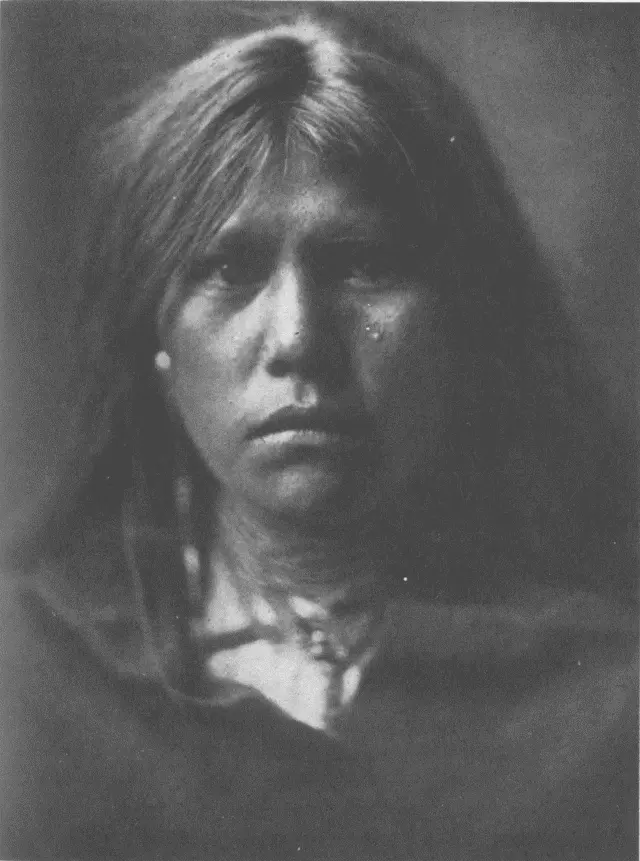
Ténokai - Apache
Father Francisco Garcés, who in 1775-76 journeyed from his mission of San Xavier del Bac, in southern Arizona, to San Gabriel, California, thence to the Hopi country, and back to his mission by way of the Colorado and the Gila rivers, had sufficient knowledge of the Apache to keep well out of their country, for they had ever been enemies of Garcés' peaceful neophytes, the Papago and the Pima. To the warlike, marauding Apache Garcés gave much thought, drawing up a plan for holding them in subjection by the establishment of a cordon of presidios. To read his simple plan and compare the ineffectual efforts of the Americans, who had the Apache country virtually surrounded by military posts for many years, will convince one that while Garcés held the Apache in justifiable fear, he little knew the true character of those with whom he was reckoning.
So far as diligent field research reveals, there was but one tribe or band of Indians living within proximity of the Apache Indians of Arizona in early times who ever affiliated with them, or associated with them in any way save on terms of enmity. This tribe was the Apache-Mohave, of Yuman stock, whose domain extended along the Rio Verde in central Arizona, immediately adjacent to the territory over which the Apache proper held undisputed sway. With these, affiliation practically became fusion, for in outward semblance, characteristics, mode of living, and handicraft they are typically Apache; but their mother tongue, though impaired, and remnants of their native mythology are still adhered to. Through the Apache-Mohave, allied with the Apache since early times, and resembling them so closely as to have almost escaped segregation until recent years, did the tribe now so widely known as Apache undoubtedly receive its name.
Читать дальше
